Research Articles
Issue Editorial Board

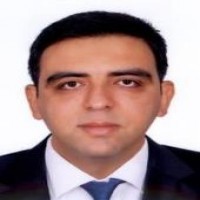


 0000-0002-8354-6783
0000-0002-8354-6783
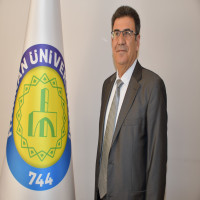
Issue Reviewers
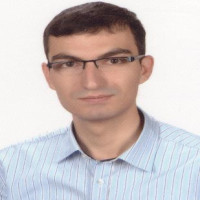
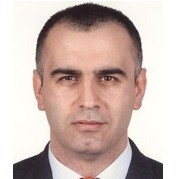

 0000-0002-6358-8302
0000-0002-6358-8302
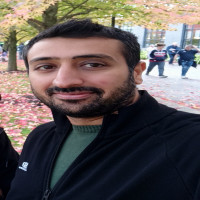
Aim & Scope
Harran University Journal of Engineering, The journal accepts studies at national and international level as follows;
1- Research articles reflecting results and findings of original research papers in science,technology and engineering fields.
Harran University Journal of Engineering, Design and Technology’ journal is about basic engineering issues. The target audience are researchers, engineers and related masses and the journal aims at informing people with the latest scientific and technological developments. The journal accepts papers reflecting the results of original results in science, technology and engineering fields at the national and international level and research papers that contribute to scientific field or papers that summarizes the latest developments on an issue are accepted.
Author Guidelines
GENERAL OVERVIEW
1- All articles/ article files must be submitted electronically in accordance with the forms on page https://dergipark.org.tr/journal/1675/submission/start
2- The uploaded article cannot be sent for publication/ be published elsewhere. Similarly, scientific articles sent to our journal cannot be simultaneously considered by other journals for presentation in a conference/have a poster/publication.
3- After the acceptance of a paper, the author or the authors must upload the copyright form to DERGİPARK system with Author(s)’s name(s) and signature(s) on during the editing process.
4- None of the contributing author(s)’ name(s) or address (es) are written in the “Ön Yükleme Formatı_HRU_Muh_Dergi” form. Therefore, the referees do not know who the author(s) are during the evaluation process. ( Blind review evaluation process)
5- At least two referee editing and the approval of the related editor is necessary for the acceptance of the uploaded article.
6- The originality of the papers and the similarities to other studies are checked by academic plagiarism detector and papers with lower than 20% originality rate are accepted for evaluation.
7- Only author(s) with articles accepted for publication organize their articles in compliance with ‘Accepted Article Format’, which can be found on: https://dergipark.org.tr/journal/1675/submission/start
8- Article name abbreviations must be done using ‘Web of Science Abbreviations’
9- Word limit for uploaded articles must be between 18.000- 20.000 words and 10-12 pages in total.
10- Summary and Abstract texts cannot be more than 400 words/ 2800 characters( spaces included)
PREPERATION OF ARTICLES
Obligatory headings in articles:
1- Abstract (in Turkish): This part briefly includes the outline, the purpose, used method/procedure and the findings of the study. The final sentence(s) must include the outcomes and the results of the study. Abstract texts cannot be more than 400 words/ 2800 characters (spaces included).
2- Abstract (in English): It is the exact translation of the abstract of the Turkish text into English. Abstract texts cannot be more than 400 words/ 2800 characters (spaces included).
3- Keywords: It is the Turkish and English words that will enable the article to be searched and found easily. Word/word groups may be between minimum 3 (three) and maximum 6(six) words.
4- Introduction: This part includes the definition of an issue or a problem, the researcher’s purpose, the importance of the study and the limitations of the study. This part includes literature review.
5- Material and Method: All the experiment(s)/ observation(s) and other efforts to conduct and result the study are defined in this section.
6- Results and Discussion: The similarities and differences with previous studies are discussed here.
7- Conclusion: The contributions of the study for scientific/daily life are in this section. The area the study introduces to the literature and the opinions on both in theory and practice are discussed.
8- Acknowledgment: Persons/institutions contributing to the study are mentioned in this section
9- Conflict of Interest (If there are any): Any persons/institutions that might me conflict of interest are mentioned in this part.
10- References: Scientific books/journals/web pages/visual or written materials used are indicated in this part.
ARTICLE TEXT WRITING
1. Article text writing format for pre loading of articles is typeface Times New Roman/Arial and type size is 11.
2- Tables must be aligned left and the explanations must be type size 11 and italics.
3. Figures/maps must be aligned center and the explanations must be type size 11 and italics.
4. Line spacing must be single 8 nk for before and 12 nk for after must be chosen for spacing.
5. Although there are not very strict rules, in the reference section author(s)’ full name(s), section heading(s)/article heading(s),volume/issue/page number, the section of the book and DOI number(if there are any) must be included. Sample reference list can be seen on pre upload page. Below are some samples for reference:
- Kahraman HT,Bayindir r., Sagıroglu S. A new approach to predict the excitation current parameter weightings of synchronous machines based on genetic algorithm-based k-NN estimator. Energy Conversion and Management, 64 (129-138), (2012). (Article)
- Mitchell, T.R. and Larson, J.R. (1987). People in organizations (Third edition). New York:McGraw-Hill, 87,92.( Book)
- Kirazoğlu,F. (2010). Metal-Yalıtkan-Yarıiletken Yapıların Elektrik Özellkilerinin Frekans ve Sıcaklığa Bağlı İncelenmesi, Yüksek Lisans Tezi, Gazi Üniversitesi Fen Bilimleri Enstütüsü, Ankara, 118-120. (Thesis)
The author(s) of the article(s) are responsible for the accuracy and providing the full details of their references.
Ethical Principles and Publication Policy
In scientific papers sent to Harran University Engineering Journal, the Higher Education Institutions Scientific Research and Publication Ethics directive and the principles set by COPE (Committee on Publication Ethics) for Editors and Authors should be taken into consideration.
Authors' duties
Authors of the original research paper should present the significance of the work performed. The underlying data must be shown correctly in the article. The article must contain sufficient detail and references to allow others to reproduce the work. Fraud or intentional misrepresentation is considered unethical behavior and is unacceptable.
Authors may be asked to provide the raw data of their study with the manuscript for editorial review and, if applicable, should be prepared to make the data publicly available.
Authors will present only completely original works and will appropriately cite other works. Publications that are effective in determining the quality of the article should also be mentioned.
In general, articles describing the same research should not be published in more than one journal. Submitting the same article to more than one journal constitutes unethical publishing behavior and is unacceptable. Articles published elsewhere as copyrighted material cannot be submitted.
Anyone who has made significant contributions should be listed as a co-author. The corresponding author ensures that all contributing co-authors are found and that people who have never participated are not added to the author list. The corresponding author also confirms that all co-authors have approved the final version of the manuscript and agreed to submit it for publication.
When the author discovers a material error or inaccuracy in her published work, he/she has the obligation to immediately notify the journal editor or publisher and cooperate with the editor to retract or correct the article.
Responsibilities of Authors
Author(s) before and/or during the submission process;
Please ensure that all submitted research is original, fully referenced, and that all authors are accurately represented. Submission must be private and not considered elsewhere.
Provide accurate contact information for a designated author, where the publisher and the editor are deemed to be solely responsible for the authorship of the article and for all communications regarding the morality and originality of the article.
Give the source of all data and third-party materials, including previously unpublished work by the authors. Any element that could compromise the originality of the presentation should be expressly avoided and/or discussed with the editorial office in the first instance.
Identify the contributions to the article of any third parties they intend to include in their article, and in each case obtain written permission from the relevant copyright holders for reuse. These permissions should be submitted when the manuscript is accepted or requires acceptance of minor changes.
Expect transparency, efficiency, and respect from the publisher and editor in the submission process. Stay in good communication with both the publisher and the editor.
Cooperate with the retraction of articles that are found to be unethical, misleading or harmful, as well as in case of inaccurate publication. Stay in good communication with the editor(s), publisher and other authors. Also take into consideration the principles stated below.
1. The journal scans research articles that reflect an original research in the fields of science, technology and engineering at national and international level with its findings and results and contributes to science, scientific articles in sufficient number (at least 50 sources and 10,000 words) and summarizes the subject at today's level of knowledge and technology, It accepts review articles, case reports and technical notes (maximum 2000 words and maximum 4 images/tables) that evaluate and compare findings.
2. Letters to the editor and discussion type publications are not included in our journal.
3. Articles that are suitable for evaluation in terms of writing and publication principles are directed to the reviewers. At least two reviewers are assigned to evaluate each article that passes editor's approval.
4. Blind peer review is used in article evaluations in our journal. The names of the reviewers who evaluate the articles are not notified to the authors. Reviewers are also enabled to evaluate the articles without seeing the names of the authors.
5. Articles sent to reviewers are expected to be evaluated within 15 days. If this period is exceeded, the editor reminds the reviewer and gives an additional period of 15 days. If this period is exceeded, the editor appoints a new reviewer and withdraws the request from him/her.
6. An article that receives at least two positive evaluation reports is eligible to be published. The article that receives one positive and one negative reviewer report is sent to two more reviewers. The final decision about the article is made by the editors.
7. The decision to accept or reject the article is made by the editors. In line with the recommendations of the reviewers, a major (re-submit for evaluation) or minor (correction required) revision decision is made for the articles that are not deemed sufficient. Articles that do not reach the desired level and are not deemed scientifically sufficient are rejected.
8. After the "resubmit for evaluation" or "correction required" decision about the article, the changes requested by the reviewers must be made within 30 days for the "resubmit for evaluation" decision and within 15 days for the "correction required" decision. Otherwise, the article will be rejected.
9. Articles submitted for publication must not have been published anywhere or sent to any journal for publication.
10. All responsibility for the articles belongs to the respective authors. Articles must be prepared in accordance with internationally accepted scientific ethics rules by checking them with plagiarism detection software to check their originality before submission. Where necessary, a copy of the Ethics Committee Report should be attached.
11. Articles submitted for publication in our journal must be prepared according to the journal article writing format. Otherwise, the article will be rejected.
12. Articles sent for evaluation should be prepared according to the journal article writing format and should not exceed 10 pages. The article summary should contain a maximum of 400 words, and the number of keywords should be at least 3 and at most 6.
13. No evaluation or application fee is charged for articles submitted for publication to Harran University Journal of Engineering.
14. During the article submission phase, the authors will first upload the necessary files for blind peer review. Articles that are ACCEPTED after the review process, author names, e-mail, institution information, ORCID, etc. that should be left blank in the first upload. The information left blank will be filled in and re-uploaded to the system by the author in the final edited version accepted by the reviewers in a ready-for-publication format. Once these processes are completed, the articles will be queued for publication.
Editors' responsibilities
The editor is responsible for deciding which articles submitted to the journal will be published. The editor evaluates articles without taking into account the authors' race, gender, sexual orientation, religious beliefs, ethnicity, citizenship, or political philosophies. The decision will be based on the importance, originality and clarity of the article and its relevance to the validity of the work and the scope of the journal. Existing legal requirements regarding defamation, copyright infringement and plagiarism should also be taken into account.
The editor and any editorial staff must not disclose any information about a submitted manuscript to anyone other than the corresponding author, reviewers, potential reviewers, other editorial advisors, and the publisher.
Unpublished materials described in a submitted article will not be used by the editor or members of the editorial board for their own research purposes without the express written permission of the author.
Responsibilities of reviewers
The peer review process assists the editor and editorial board in making editorial decisions and can also serve the author in the development of the article.
Any reviewer who is not qualified to review the research reported in a manuscript or who knows that immediate review will be impossible should notify the editor and withdraw from the review process.
Articles submitted for review should be treated as confidential documents. It should not be shared or discussed with others unless authorized by the editor.
Comments should be made objectively. Reviewers must express their views clearly with supporting arguments.
Reviewers should identify cases where the relevant published work cited in the article is not cited in the reference section. They should indicate whether observations or discussions from other publications accompany relevant sources. Reviewers will notify the editor that there is a significant similarity or overlap between the manuscript under review and other published manuscripts for which they have personal information.
Privileged information or ideas obtained through peer review should be kept confidential and not used for personal advantage. Reviewers should not consider manuscripts for which they have competitive, collaborative, or conflict of interest arising from relationships with other authors, organizations or institutions affiliated with the newspapers.
References
Committee on Publication Ethics (COPE). http://publicationethics.org/files/Code_of_conduct_for_journal_editors_Mar11.pdf
Higher Education Institutions Scientific Research and Publication Ethics Directive:
https://www.yok.gov.tr/Sayfalar/Kurumsal/mevzuat/bilimsel-arastirma-ve-etik-yonetmeligi.aspx
Price Policy
Dergimiz araştırmacılardan ücret talep etmemektedir.

